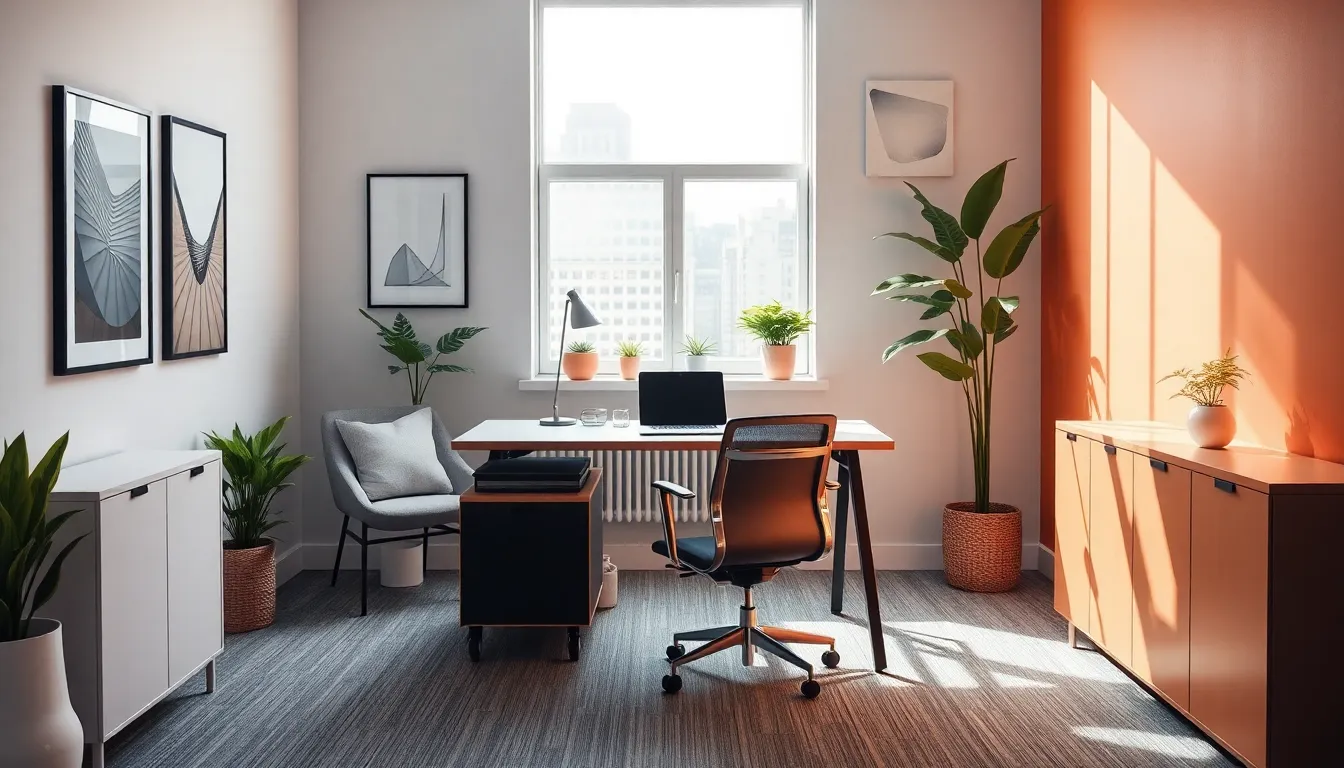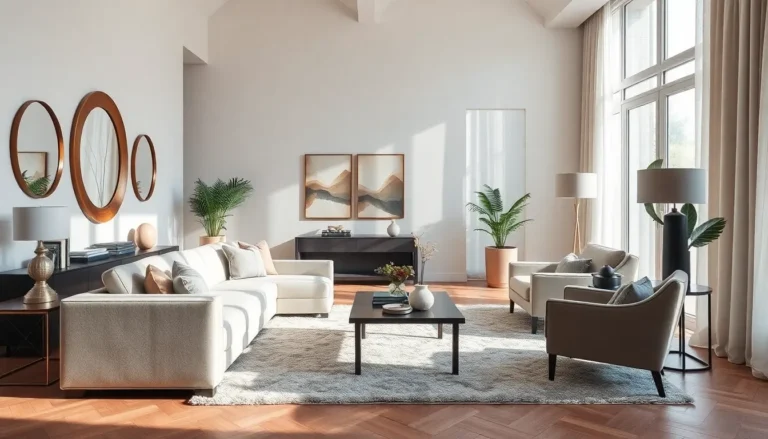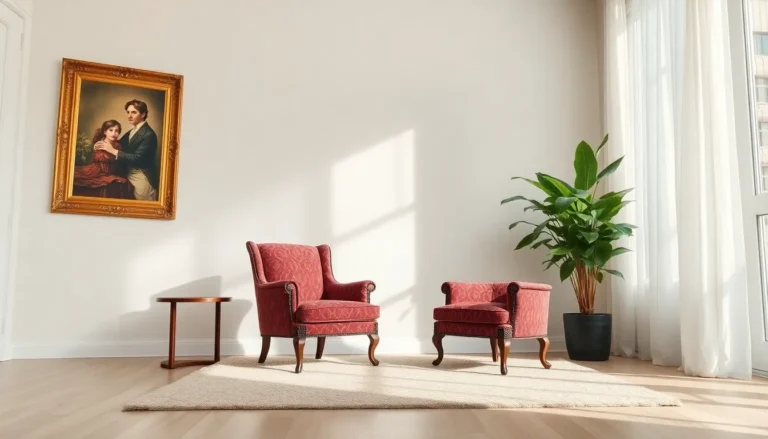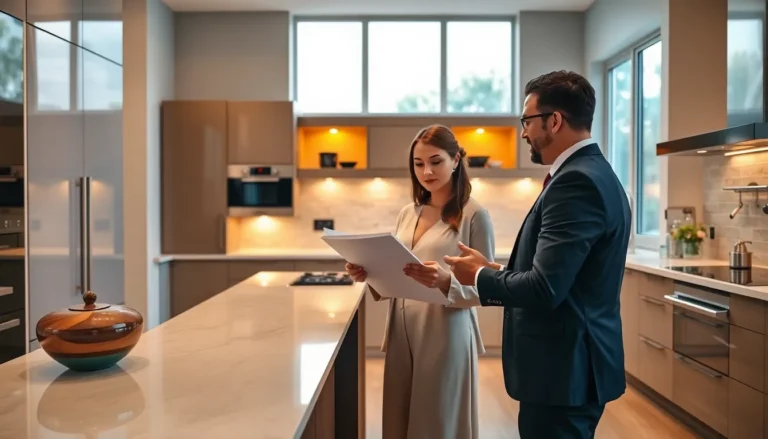Small office design concepts can send even the most seasoned professional into a whirlwind of excitement, and maybe just a hint of panic. The thought of transforming a cramped space into a functional and inspiring work environment is like a magician pulling a rabbit out of a hat. With the right strategies, these small spaces can breathe creativity and productivity. Let’s jump into the exciting world of small office design concepts.
Table of Contents
ToggleUnderstanding the Importance of Small Office Design
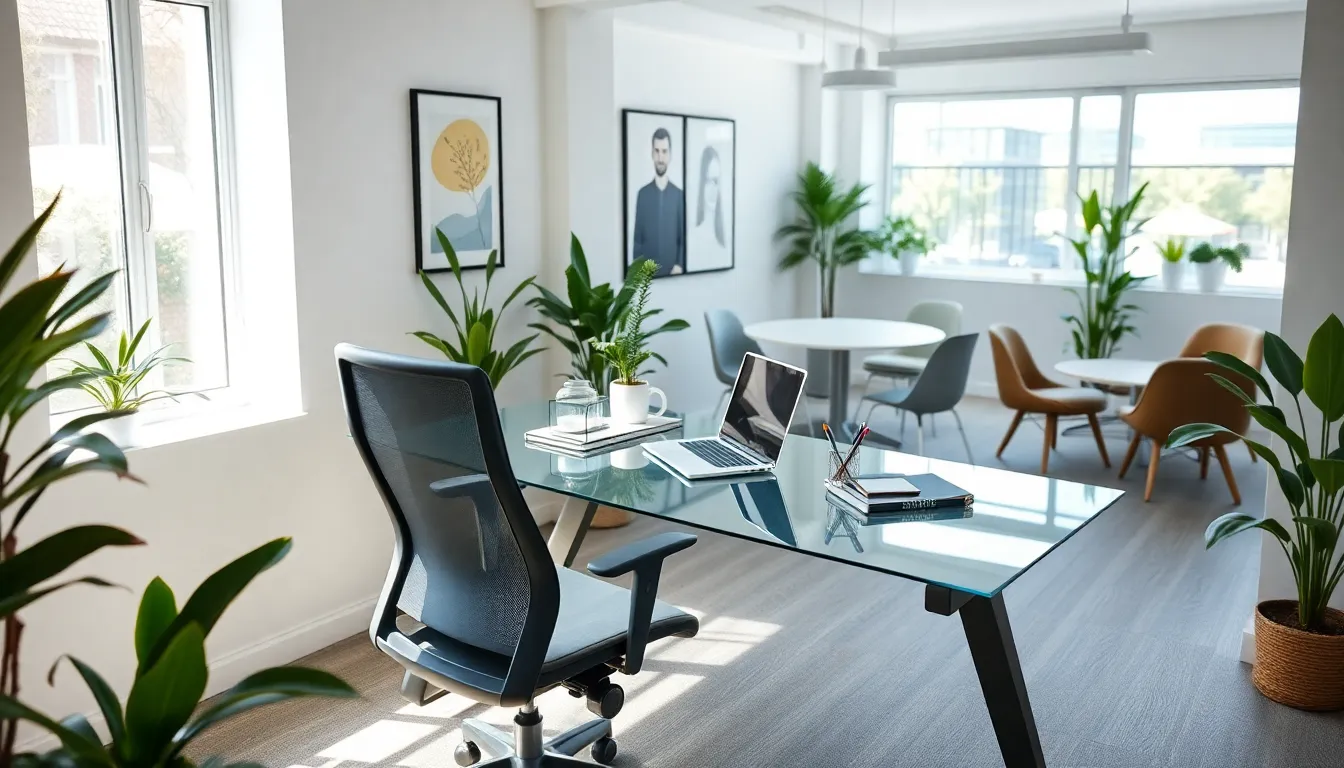
In the modern work landscape, the importance of thoughtful small office design cannot be overstated. A well-designed small office creates an atmosphere that encourages productivity and collaboration. When space is limited, every inch counts. Professionals know that an organized environment leads to reduced stress and improved morale. This isn’t just about aesthetics, it’s about crafting a workspace that fits the needs of its users. Effective design fosters creativity, ensures smooth workflow, and enhances job satisfaction.
Key Elements of Effective Small Office Design
What are the key elements that contribute to effective small office design? First, functionality should always come first. Every piece of furniture and every layout decision should prioritize the specific tasks to be performed in that space. Next, storage solutions play a pivotal role. Incorporating clever storage options helps to minimize clutter, making the workspace feel larger and more open.
Also, ergonomics is something that shouldn’t be overlooked. Employees deserve comfort, which can lead to heightened efficiency. Finally, the incorporation of personal touches, like artwork or decor, can create a more welcoming atmosphere, making it feel like home while still being professional.
Maximizing Space: Layout Strategies
Layout strategies are where the magic happens in small office design. An open floor plan might seem appealing, but customizing spaces based on specific work needs can take priority. For example, a combination of collaborative zones and private workstations can create balance.
Using furniture pieces that can serve multiple purposes is a game changer. Think about desks that can double as meeting areas or high-top tables that can encourage spontaneous brainstorming sessions. Zoning is another effective approach, whether using partitions or even clever color coding to define different areas. By creating distinct zones, it allows for focus while still fostering team interaction.
Incorporating Color and Light in Small Offices
Lighting and color are critical in any small office design. Natural light is the ultimate perk: studies show that exposure to daylight can significantly boost mood and productivity. When designing a small office, placing desks near windows can allow for that precious sunlight. If natural light is sparse, introducing adjustable LED lighting can replicate that warm glow, keeping the ambiance inviting.
Color, on the other hand, can influence emotions and productivity. Soft hues can calm the mind, while brighter colors can invigorate energy levels. Choosing an accent wall or colorful decor can liven up the space without overwhelming it.
Choosing Furniture for Small Office Spaces
Choosing the right furniture is essential in maximizing functionality in small office spaces. A savvy approach involves selecting modular furniture that can be rearranged as needed. Desks with built-in storage or shelves can help eliminate the need for bulky filing cabinets.
Consider also the scale of the furniture in relation to the space. Oversized pieces can make a small office feel more cramped. Instead, opt for sleek designs that provide comfort and utility without being obtrusive. Height-adjustable desks are another fantastic option: they support a healthier work routine by allowing individuals to alternate between sitting and standing.
The Role of Technology in Small Office Design
In contemporary small office design, technology plays an indispensable role. Integrating tech solutions can boost both efficiency and collaboration. Incorporating tools for seamless communication, like advanced conferencing setups and user-friendly project management software, is vital.
Smart office solutions such as IoT devices can optimize operations by automating tasks, adjusting lighting, or managing air quality. Emphasizing wireless technology can help reduce clutter while ensuring that workspaces remain functional and adaptable to change.
Sustainable Practices in Small Office Design
Sustainability is no longer just a buzzword: it’s an essential aspect of any thoughtful small office design. Utilizing eco-friendly materials can make a significant impact not only on the environment but also on employee well-being. For example, furniture made from recycled materials or sustainably sourced wood can contribute positively.
Energy-efficient appliances, proper insulation, and the incorporation of plants can further enhance sustainability efforts. Not only do these practices appeal to eco-conscious clients, but they can also create a healthier work environment for employees.

